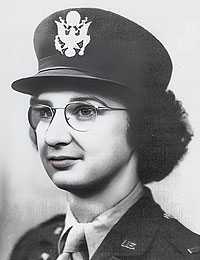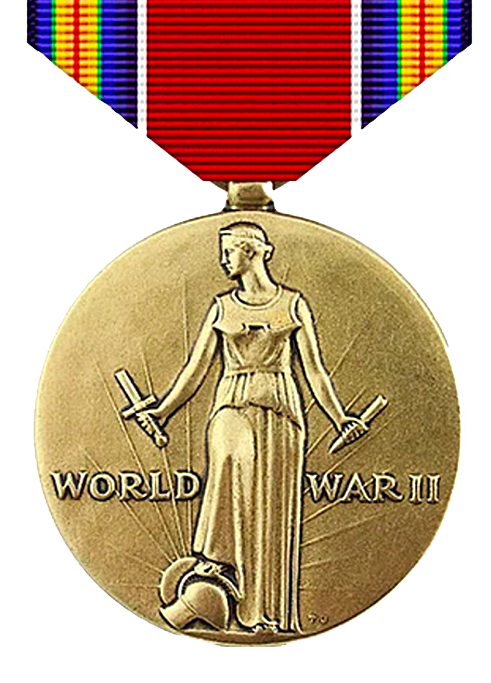Prelude to Serving
Nancy Ewing was born near Chicago in Libertyville, Illinois in 1920. Her father was the CEO of a large international dredging company. The family was affluent and traveled frequently. In 1936 Nancy went on a German propaganda tour on the Nor-Deutcher-Lloyd line, at a price of $350 New York to New York. In addition to showcasing a peaceful Germany, the tour included visits to Ireland, England, Belgium, France, and Switzerland. While in Munich, Nancy celebrated her sixteenth birthday. A highlight of the tour was attending the Berlin Olympics, where Hitler was determined to demonstrate the superiority of the “Aryan” race. Contrary to his expectations, Nancy watched Jessie Owens compete and break records and win gold medals. Nancy vividly recalled standing in the crowd, putting her arm out and upward, performing the “Olympic salute,” a tradition used in the Olympics to celebrate excellence. She was unaware at that time it was being transformed instead to become a Nazi salute, along with the added utterance of the words “Heil Hitler” as a signal of obedience to Hitler.
Nancy graduated from Iowa State in 1942 with a Bachelor of Science in Dietetics and then completed a Dietician Internship at Cook County Hospital in Chicago.
Military Service
After visiting a friend who had come home from serving in World War II in a body cast, Nancy decided to join the Army.
Early in 1944, she attended basic training at Fort McCoy in Wisconsin as a Second Lieutenant. Nancy’s active duty began on June 1, 1944, just six days before D-Day. She was assigned as a Hospital Dietician in a 1000 bed Army Hospital that specialized in orthopedic reconstructive surgery in Ohio.
January 1945 found Nancy on a troop ship to England along with the Hospital staff of the 251st General Hospital. The ship, with ten women and 3,000 men, was in a large convoy that took seven days to cross the Atlantic. They went on to Le Havre, France, arriving during one of the coldest winters on record. The hospital in which they would serve was to be located in the small village of Suippes, just 26 miles east of Reims, near the 82nd Airborne, and within 100 miles of the Battle of the Bulge. A horse barn was being renovated to become the hospital. While awaiting completion, men were sent to Camp Lucky Strike, and the women were billeted at the Château de Mesnières.
While waiting in the ancient and unheated castle, Nancy became deathly ill. She was rushed via ambulance to a nearby hospital in Rouen. She was diagnosed with spinal meningitis and given penicillin, reserved only for military serving overseas. Nancy survived and eventually joined the rest of the staff of the 251st General Hospital in Suippes where the Hospital functioned at a 1000 bed capacity.
Because of American losses in the Battle of the Bulge, all available men from the Hospital were sent to the front lines. Without nurses available, ward boys were trained as substitutes. To feed patients, meals were served utilizing dehydrated and canned food, Spam and k-rations. The kitchen staff included five French girls, two Polish, one Russian, one Greek and 15 German Prisoners of War (PWs.) The PWs were obedient as they preferred working in the warm mess to living in tents in the bitter cold winter.
The hospital staff celebrated Victory in Europe, or VE Day, in the village, with dancing and singing to the national anthems of France and the United States.
Most of the Hospital staff did not have enough points to be returned home. In anticipation of a transfer to the south Pacific, the staff was loaded on boxcars on a train headed south to Marseille. However, somewhere during that several day trip it was announced that Japan had surrendered. Finally, the war had ended. Many in the original 251st hospital staff were reassigned, with several sent to help with reconstruction in Germany. Nancy and a few others were sent to another hospital in France, in Mourmelon, where the common treatment was no longer for combat wounds but instead for venereal diseases.
There were still many soldiers held up in Europe awaiting transfers or returning home. An American University was set up in Biarritz in southern France, a town with a reputation as the “playground of emperors and empresses.” Soldiers could take classes for credit, essentially a precursor to the GI bill. Nancy met her future husband, James “Jack” Munro. He had served as a chemical warfare training officer and as part of the headquarters staff of the 4th Fighter group in Debden, England. Coincidentally, both had attended Iowa State University but had never met.
On her voyage home, Nancy served as an interpreter on the Zebulon B Vance bride ship. She helped escort 452 French mademoiselles that would join their new American husbands, along with 173 children. Nancy was discharged as a Second Lieutenant from the Army in May of 1946. Nancy and Jack were married right after the war in December of 1946. Both Nancy and her husband were very proud to be veterans.
In 1957, Nancy typed up a story of her experiences in the War. Per Nancy, it was “the story of five girls seeking purpose and meaning in a world too large to grasp.” It was based on actual events, yet she claimed to have changed some names and places in order to protect the innocent. She used an alias “Kathy.” Her original 660 page typed manuscript was shortened and edited by her daughter, and has been published as Girls in a World at War. An excerpt follows here below
Story submitted by her daughter Peggy Munro Scholberg
From Girls in a World at War
Excerpt from CHAPTER 10: CHERRY PIE
“Fifty-six just liberated from concentration camps. Here’s where your patients are.” She handed her a list: 9 liquid diets, 11 soft, and 30 light diets. These were for men too weak to eat regular diets. “Brace yourself. It’s bad.” Her red hair was wild and tangled.
“I’ve seen starved men before.”
“I thought I had too.” Vivienne said, with tears in her eyes.
Kathy put her special diet roster in her pocket and filled a three-gallon aluminum pitcher of eggnog from a GI can. If these patients had been severely starved, they would welcome eggnog. This was the one combination of dehydrated milk and powdered eggs that Kathy had developed that was as good as the real thing. She sprinkled a dash of nutmeg on top and added sugar for quick energy. She would add to her “Times” article list: “Carried eggnog to newly liberated starved prisoners.” That had an inspiring sound.
The first patient she visited lay quietly on his back. He didn’t even turn his head when she entered his room. A blood transfusion dripped into a vein that stood out on his fleshless arm as the only substance between skin and bone. The skull-shape of his head showed beneath the pale, translucent skin. His eyes were buried deep in shadowed sockets, his cheeks sunk in hollow jaws. Barely able to breath, he was obviously too weak to eat. Clearly, a full glass of eggnog would be too heavy for his emaciated stomach to digest, and the struggle of regurgitation would exhaust him, maybe exhaust the feeble energy that kept him breathing.
She ran back to the mess for cans of orange juice that could be absorbed without taking much energy for digestion. She hurried so this man could begin the tiny sips he could tolerate. His life was saved, though, not by food, but by the blood transfusion. She set two cans of OJ on the table. She lifted the cleaver from its hook on the wall to open the can. She cautiously hit the corner of the cleaver on the can lid. It merely made a dent.
“Bitte, I do it,” Oscar reached for the cleaver.
“Nein! No!” Kathy turned her back to stand between him and the precious juice. She struck the cleaver at the can harder, and again only dented it.
“I help,” said Oscar.
“Don’t you dare touch that juice! You, you…,” she struck again, and this time chopped a hole, “you German!”
She would carry the food to all the starved men—not letting a German PW carry them. Maybe tomorrow she could believe the Germans were ordinary men who wore fatigues just like the GIs wore fatigues, but for now the Germans were monsters.
She returned to the first newly liberated starved patient. She poured a little orange into the spouted cup on the bedside table. If she turned his head and tilted the cup, he wouldn’t need even to suck, just swallow.
His eyes were closed, as though even the effort of seeing were too great. She spoke in a quiet voice, not wanting to wake him if he were just resting, but just wanting him to know she was there. “Would you like some juice?” No answer. He might be French: “Voulez-vous du jus?” Or German: “Apfelsine saft?”
His eyes remained closed. He wasn’t breathing. This was the hospital’s first death.
Feeding starving men was not the noble gesture she had considered it might be. She felt no nobility, just numbing shock. Until now, she had not quite believed the newspaper accounts of German atrocities, and had dismissed them as propaganda. Could man be so cruel? Man was this inhumane? It was a miserable experience.
After the patients’ supper, before her own, she carried the evening nourishments to the wards. The shrunken stomachs of these men could hold only small amounts, so they were fed frequently. She made several trips, for she could not let a German touch the food.









